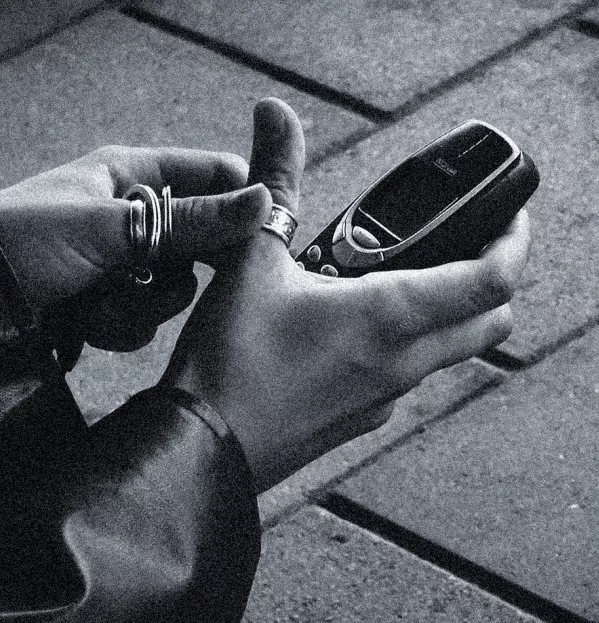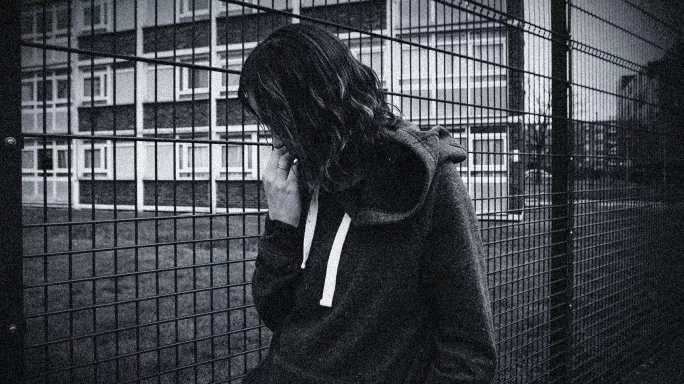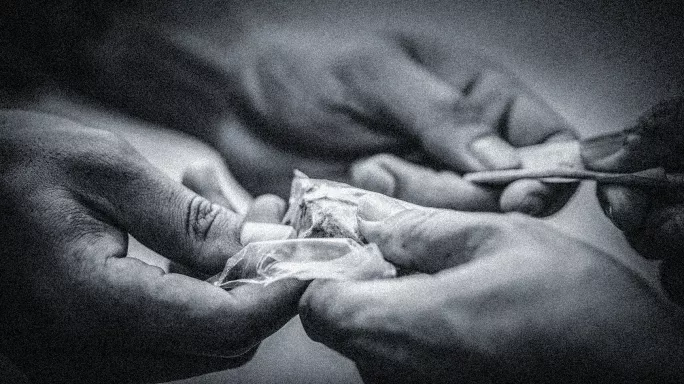- Home
- Teaching & Learning
- General
- County lines: how can teachers help?
County lines: how can teachers help?

Schools look to the police to act against county lines - to stop the trafficking of drugs between cities and more rural areas, to keep children safe. But, according to former police officer Peter Wilson, in this area the police are powerless.
“Everybody believes the police and social services can resolve county lines. But they only become aware of the young person once they are involved,” says Wilson, who worked as part of the Metropolitan Police’s Trident unit tackling gang crime. By this point, he adds, it is often too late.
According to official figures from the National Crime Agency, at least 27,000 children in England have been identified as a member of a county lines gang. They are part of a criminal network of supply lines for illegal drugs, but the problems are much wider: violence, sexual abuse, robbery and more. It’s not uncommon for children under the age of 12 to be caught up in it, too.
And Wilson, who today is training consultant at Serenity Welfare, predicts that the actual number of children involved is much higher: the statistics, he says, only represent the children we know about.
The government has pledged to tackle the problem, with prime minister Boris Johnson announcing a £300 million investment to break up county lines gangs, as part of a new 10-year drug strategy.
The new approach, he said, would “attack supply and break the county lines model, which sees criminals profit from people’s misery”.
This won’t be enough, says Wilson. What is needed, he argues, is early intervention.
“If you can get to children before they get into the gang, there’s a much better chance of saving them. I work with thousands of gang members. If three out of every 100 leave the gang, we’re doing quite well,” he explains. “Prevention is better than cure.”
So how do we do prevention?
“That’s where teachers - and parents, of course - are key,” says Wilson.
Teachers are often best placed to reach children before they become involved in a gang, and so schools have a critical role to play in the fight against county lines, he adds.
Whether or not teachers feel equipped to take on this responsibility - or even have the capacity to - is another matter, though.
Sam Roberts* is a safeguarding lead in the West Midlands. He recognises that education staff can make a difference around county lines, and admittedly quite a big one, but questions the extent to which schools should be expected to solve societal problems.

“It’s a massive ask to make it our sole responsibility. We need collaboration between parents, outside agencies and teachers,” he says. “If there’s suddenly a massive gap in attendance, we should be following that up. A lot of the time, though, it’s difficult to know what’s going on outside of school, and how to pre-empt that.”
David Taylor* is a deputy curriculum lead at a sixth-form college in London, and he has experience in this area: concerns are raised about student involvement in county lines once a fortnight on average. But he, too, worries about the level of responsibility being placed on teachers’ shoulders.
“The government sees teachers as social workers who can fix all the ills of society. But we can’t change what happens beyond our gates, we can only offer support inside schools,” he says.
“Workload is building and building. It’s probably about 25 children out of 2,500 who are involved in county lines at the highest level, and it comes down to priorities. This is at the very bottom of the list because those students don’t want to engage with you, they’re not in lessons. It takes so much to build relationships with them, and we simply don’t have the resources.”
Wilson is sympathetic to all of this, but sees the issue as being just too important for schools not to be prioritising it. And the government, it seems, agrees with him.
From harm to hope, the 10-year drug strategy published last December, states that “frontline practitioners”, including teachers, must work together effectively, and that “the most effective and sustainable approach” to reducing demand around drugs is to build resilience and give children the best start in life, including the “best education possible”.
It stresses that schools should be teaching about the dangers of drugs and alcohol through the compulsory health education curriculum introduced in September 2020, and that there are “a range of programmes in schools” to identify and support children at risk.
In addition, every member of school staff now has a statutory duty to be on the lookout for signs that a child might be involved in county lines.
The most recent version of Keeping Children Safe in Education (KCSIE), which came into force in September 2021, includes a new section covering “child criminal exploitation” (CCE), which includes “children being forced or manipulated into transporting drugs or money through county lines”.
Whether teachers think it is feasible or not, then, the responsibility being placed on schools is clear. So within the restrictions noted above, what can they practically do to have an impact?

1. Identifying vulnerable pupils
According to KCSIE, all staff must have an awareness of CCE and know how to spot the “early indicators” that a young person may be at risk of being exploited by criminal gangs, or that they are already involved.
In no particular order, Wilson says, these indicators are:
- tiredness
- poor hygiene
- being in possession of a lot of train or bus tickets and/or multiple phones
- changes in behaviour
- being found with condoms and vaseline
- new clothes
- flashing cash
- truancy
- malnutrition
- associating with gangs
- sexualised behaviour
- going missing
Both boys and girls are at risk and, according to the Home Office’s county lines guidance, the risk is greatest for young people between the ages of 15 and 16.
Gangs are known to target those children who are already vulnerable in some way, such as those who lack a safe or stable home environment, and those with mental health or substance misuse issues. However, Wilson stresses that every single child is at risk, including those who might not be obvious targets.
“Gangs don’t want the kids who get into trouble, because they are more likely to get caught. Instead they choose children who are ‘floaters’, the ones who are in the middle of the pack, who keep their heads down. These are the ones who slip through the net when they go off the rails,” he says.
Indeed, a guide published by the Ministry of Justice in 2019 says that “practitioners should be aware that organised drug dealing networks are now targeting a new demographic of children, often referred to as ‘clean skins’, who are not previously known to local authorities.”
Children with special educational needs are also particularly at risk, says Donya Lamrhari, a systems change lead at the Children’s Society, a charity that works with young people facing abuse, exploitation and neglect.
“Schools tell us time and time again that when they’re looking at the children being exploited, many of them have a learning difficulty or undiagnosed learning needs,” she says.
This, she explains, is often to do with the nature of their conditions: if their ability to process information, regulate their emotions, sequence events and understand what is being said to them is affected, they don’t always recognise that they’re being exploited.
“It may also be that because they’ve got learning difficulties, they don’t have a lot of friends. They don’t feel that sense of belonging and perpetrators will target those sorts of vulnerabilities in young people,” she says.
There is also, she adds, a circular link between exclusions and exploitation - and we know that pupils with SEND are disproportionately affected by exclusion.
“A child might be being exploited, which means their behaviour changes drastically, and then they are excluded for the behaviours linked to the exploitation,” she explains.
“You may have a vulnerable child for various issues: it could be mental health or addiction, who is then excluded because of these vulnerabilities. Taking them away from the education environment then increases the risks and vulnerabilities of exploitation.”
In fact, the Timpson review of school exclusion, published in 2019, found that exclusion is a marker for being at higher risk of becoming a perpetrator of crime: 23 per cent of young offenders sentenced to less than 12 months in custody in 2014 had been permanently excluded from school prior to their sentence date.

2. Observing ‘recruiting’ behaviour
It’s not just individual pupils that teachers need to be keeping an eye on, though. Wilson says that those involved in gangs are often under pressure to recruit others, as part of what he calls an “Avon”-type scheme: this can happen in any school, with potentially devastating consequences.
Wilson describes a situation in which Benny, a 13-year-old gang member, asks to borrow his classmate Sophie’s phone, because his phone battery has died. Benny transfers Sophie’s contacts to the gang member, who then texts everyone, pretending to be a friend of Sophie’s, and asks if they’re interested in earning extra money.
The impact can then spread right across a school, which Taylor has witnessed this first-hand.
“In terms of the ones we’re aware of, it’s probably about 25 kids [directly involved in county lines], in a student population of 2,500. But there’s probably 70 other kids below them, all part of it, that we just aren’t aware of,” he says.
“It’s really difficult, because we know it’s happening, but there is such a lack of proof and evidence. At one point, the relationships with the police weren’t as good as they should have been, and we didn’t have all the information and evidence that we required, and therefore it hung over all of us as staff.”
Selin Aklan has also seen how county lines can engulf a school. Today, she is head mentor at Serenity Welfare, an organisation providing support for children in care, but prior to this she worked in a pupil-referral unit (PRU), where, she says, county lines involvement was part and parcel of the culture.
“About 95 per cent of students, girls included, were involved in county lines,” she says. “There was a pattern of recruitment.”
It should be noted that the statistic cited by Aklan is far beyond the levels of involvement you would see in most mainstream or, indeed, alternative-provision settings.

3. Staff training
As mentioned above, county lines can touch any child. And there is evidence that the coronavirus pandemic has exacerbated the risk in many parts of the county: recruitment was driven online during national lockdowns, with gangs using social media more extensively to target young people.
As a result, according to a report from the National Youth Agency, published in March last year, there is now “an increasing risk to young people from more affluent areas or supported family backgrounds”. This means even schools that have previously not faced challenges in this area could begin to see pupils becoming involved for the first time.
Therefore, staff training around the signs of exploitation, mentioned above, and on the level of risk is crucial, says Wilson.
He also suggests that teachers familiarise themselves with common phrases or words used by gangs: “OT”, for example, means out of town (see box, below, for the full list).
Lamrhari agrees that staff training is key, and says that any CPD in this area also needs to cover how to create an environment in which a young person feels safe enough to open up.
“We know that most children don’t see themselves as being exploited, so we need to listen to the young person, and not dismiss what they’re saying,” she says. “Avoid judgement and using victim-blaming language that suggests they’re choosing to sell drugs or carry a weapon.”
Schools can turn to charities and experts for support around this: Serenity Welfare, for example, has a training package at a fee, and The Children’s Society, provides all their training for free.
4. Set up robust reporting systems
For all this to work, leadership teams need to ensure they respond to staff’s concerns.
Lamrhari says that any suspected case of exploitation is a child protection issue, and therefore safeguarding procedures must take place as normal.
But she also recommends staff becoming familiar with the National Referral Mechanism (NRM), which is a national framework for identifying and referring potential victims of modern slavery and ensuring they receive the appropriate support.
While schools and teachers can’t make NFM referrals themselves - you have to be a first responder - Lamrhari says they can provide lots of information and advocate for the child so that the first responders have everything they need to raise a case and protect the child.

In Milton Keynes, the Thames Valley Violence Reduction Unit (VRU) recently ran a pilot called “Operation DIVAN”, which saw schools report intelligence on suspected issues and crimes to the police. A police officer then led a non-threatening conversation with the young person, the school and their parents to deter criminal behaviour.
The pilot was a success, and has led to the development of a “school navigators” programme, which is due to be rolled out this year. This will see police officers go into schools not only to have those initial conversations, but also to signpost or “navigate” young people to other services that can help them.
Tom Goodenough is the education lead at the VRU and a former headteacher, and he says that it’s crucial schools and the police work together as soon as criminal activity is suspected.
“This is something that every police force and school should be doing,” he says. “Once teachers spot those early signs of vulnerability and risk, the police can then use their expensive local knowledge of voluntary and community providers to signpost support for young people.”
5. Create community links
Being aware of other work going on in the community around intervention is crucial for schools, says Goodenough - and not just for signposting reasons. The organisations carrying out this work are the experts, he says, and there is plenty that schools can learn from them.
Rescue and Response, for example, is a pan-London service that supports young people aged up to 25 who are involved in or affected by county lines activity through a wide range of interventions. As well as a structured programme of 15 sessions focusing on themes such as healthy relationships, sexual violence and exploitation, the service also offers a dedicated helpline, risk planning, support with legal cases, and access to education, training and employment.
Teresa Swann is the coordinator for South London, and she says tapping into insights from services such as Rescue and Response can help schools offer tailored support.
“When these children are trying to move out of gang culture, even just walking to school can be unsafe. If there’s a school bus service they can catch, or if they have a trusted teacher they can call to pick them up, it can really, really help,” she says. “Having worked in schools, I know there are people there from about 6.30-7am. I know young people moan about school, but actually it’s quite a safe space for them.”
In a perfect world, Swann would love to see a team of trusted adults within a school - not necessarily teaching staff or the safeguarding team, but those trained in pastoral care - who can take on the role specifically of working with children who are at risk of, or already involved in, activity around county lines.
She knows this isn’t realistic, however, and says instead, being brutally honest in PSHE lessons is critical.
“In those sessions, teachers need resources to use around exploitation, what that looks like, what to look out for with regards to online grooming. They need to know the reality of what happens to young people once they say yes to that initial £50, rather than an idealised view of having loads of money and being part of a ‘family’,” she says.

There are plenty of resources schools can lean on when it comes to raising awareness. In the past couple of months, national film charity Into Film has released a film called County Lines, based on the story of 14-year-old Tyler, who finds himself transporting narcotics for a local criminal. The film is unsparing in its depiction of what a child goes through in these circumstances, so serves as a stark warning.
That particular film has a rating of 15+, so wouldn’t be suitable for younger children. But in the primary space, there is work going on here, too. The Essex police force, for example, has been working with the Dot Com Children’s Foundation to create an online tool in which friendly cartoon characters educate primary children on how to spot dangerous situations around exploitation, and who they should approach if they do find themselves in danger.
For Wilson, it’s an absolute necessity that this work starts in primary school.
“It’s much cheaper and easier to recruit an eight or nine-year-old than it is a teenager, and it’s really important we target and educate primary school teachers, governors and parents about what to be looking out for,” he says.
Goodenough agrees, and says that while drugs awareness through PSHE at secondary school is helpful, the root cause of involvement in county lines usually comes much earlier in life and, therefore, this work comes too late.
“It’s incredibly rare that you meet a young person involved in county lines where that was their first brush with illegality, and with the sort of people who are going to get them involved in that,” he says. “We need to prioritise early intervention in primary schools.”
Ultimately, this sounds like quite a to-do list for schools. But, as Lamrhari reiterates, this isn’t an issue that teachers should be tackling without support.
“There’s a lot of pressure in schools, we need to remember the context: the pandemic is really affecting the demand around help not just for exploitation, but for mental health and wellbeing, too,” she says. “This is where the more multi-agency response is required, where statutory services need to be working together. We can’t expect schools to deal with it alone.”
As for what a more joined-up approach might look like, Thames Valley VRU provides one possible model in the form of its violence reduction network. The network meets monthly and is made up of 23 representatives from local schools. At the meetings, as well as the teachers, there are experts from organisations working with young people in the community: they give schools ideas of interventions they could run and, in turn, schools flag the young people they believe could benefit from the range of services the experts offer.
Obviously, the same support will not be available in every area, but Goodenough says that the more that schools are able to engage with the community sector, the better.
And, like Wilson, he believes that the role that teachers play in reaching children early cannot be understated.
“I understand the reticence around schools saying ‘Well, that isn’t our role’, but if the statutory services are all overstretched and if you can offer support, it’s time to swallow that unwillingness to get involved and do something,” he says.
That, of course, comes with the caveat that schools need more help in this area: better training, stronger community support and the links that allow teachers and leaders to access that support readily.
The police can’t fix the problem alone, but neither can schools. If the government is serious about wiping out county lines, the focus arguably needs to be on joining the dots between law enforcement, community services and schools to ensure that we are presenting a united front.
Find out about Tes Safeguarding Awareness Week 2022 (16-22 May). Everyone has the right to feel safe and this week Tes are offering free webinars, expert guides and resources to help support your school raise awareness around important safeguarding issues.



